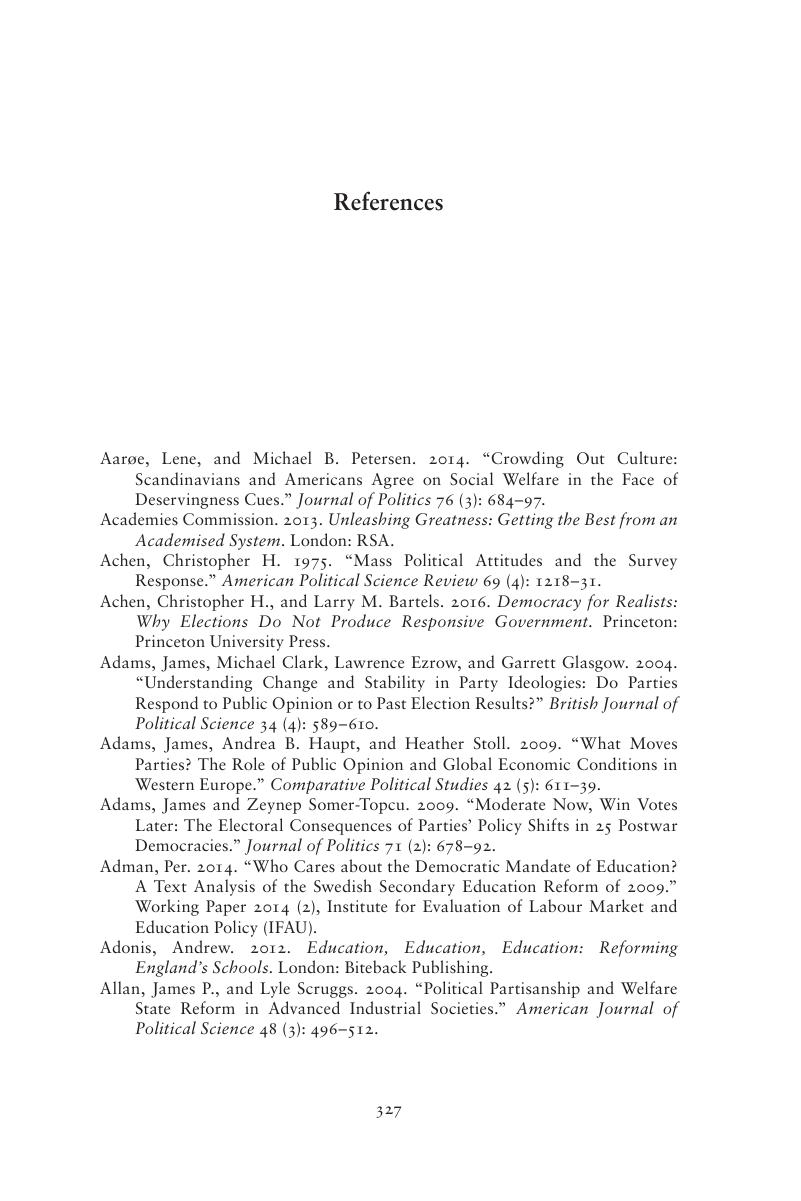Book contents
- A Loud but Noisy Signal?
- Cambridge Studies in the Comparative Politics of Education
- A Loud but Noisy Signal?
- Copyright page
- Contents
- Figures
- Tables
- Preface and Acknowledgments
- 1 Introduction
- 2 Theoretical Framework
- Part I Quantitative Evidence: Attitudes, Public Opinion, and Politics
- Part II Qualitative Evidence: The Role of Public Opinion in Education Reforms in Western Europe
- 9 Comparative Summary and Conclusions
- References
- Index
- References
References
Published online by Cambridge University Press: 14 September 2020
- A Loud but Noisy Signal?
- Cambridge Studies in the Comparative Politics of Education
- A Loud but Noisy Signal?
- Copyright page
- Contents
- Figures
- Tables
- Preface and Acknowledgments
- 1 Introduction
- 2 Theoretical Framework
- Part I Quantitative Evidence: Attitudes, Public Opinion, and Politics
- Part II Qualitative Evidence: The Role of Public Opinion in Education Reforms in Western Europe
- 9 Comparative Summary and Conclusions
- References
- Index
- References
Summary

- Type
- Chapter
- Information
- A Loud but Noisy Signal?Public Opinion and Education Reform in Western Europe, pp. 327 - 360Publisher: Cambridge University PressPrint publication year: 2020

